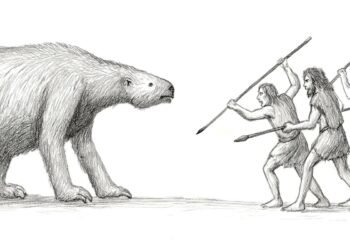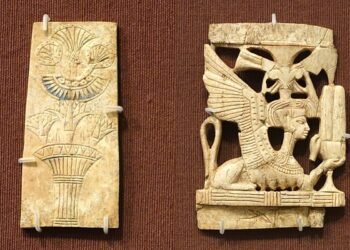Archaeologists excavating at Körzüt Castle, located in the Muradiye district of Van, Turkey, have unearthed a 2800-year-old Urartian temple and two cuneiform inscriptions.

Körzüt Castle, which stands approximately 3 km north of Uluşar and overlooks the Muradiye/Berkri plain, is believed to have been an Urartean fortress constructed during the reign of King Minua in the 9th/8th century BCE. Under the scientific supervision of Associate Professor Dr. Sabahattin Erdoğan, the rescue excavations commenced on October 13, 2023, with the support of the Ministry of Culture and Tourism.
One of the most notable discoveries at the site is an Urartian Susi temple, a type of square, single-chambered tower-like building, offering insights into the religious practices of the Urartian civilization. This tower-type susi temple, known as a ‘rizaritli’ (buttressed) temple, is estimated to be approximately 2800 years old. The temple was part of a citadel that extended from north to south, as indicated by a cuneiform inscription on its northern façade, composed of six rows.
Dr. Erdoğan, the leading archaeologist in this excavation, expressed the team’s enthusiasm about their remarkable discoveries. He stated, “During our work, we identified an Urartian Temple dating back approximately 2800 years. The inscriptions we have found provide invaluable information about the ancient history of the region. They might even reveal the ancient name of the castle during the Urartian era.”
Erdoğan’s comments on the significance of multiple temples found in this region are particularly intriguing. He noted, “Having more than one temple in a castle is not a common understanding among the Urartians, making these structures even more important. The presence of variations in architectural features and possible differences in time periods among these temples suggest a complex historical and religious heritage in the region, warranting further research and analysis.”
The discovery of two inscriptions featuring cuneiform writing further enriches our understanding of this ancient culture. The inscriptions are believed to describe a campaign during the period of King Minua.
The excavation efforts have been meticulously led by the Van Museum and have received support from the Muradiye District Governorship and Municipality. In addition to the temple and inscriptions, archaeologists have unearthed a variety of significant artifacts, including tandoors and partially damaged blue-plastered adobe bricks.
Apart from the remarkable temples, tandoors and partially damaged plastered mud bricks with blue plaster, typical of Urartian temples, have been unearthed. Archaeologists are currently speculating about the potential presence of mythological scenes carved in brown or black on these blocks.
As District Governor Melih Aydoğan pointed out, the newly discovered Urartian temple and inscriptions are expected to contribute to tourism by attracting history enthusiasts and researchers to the region.























